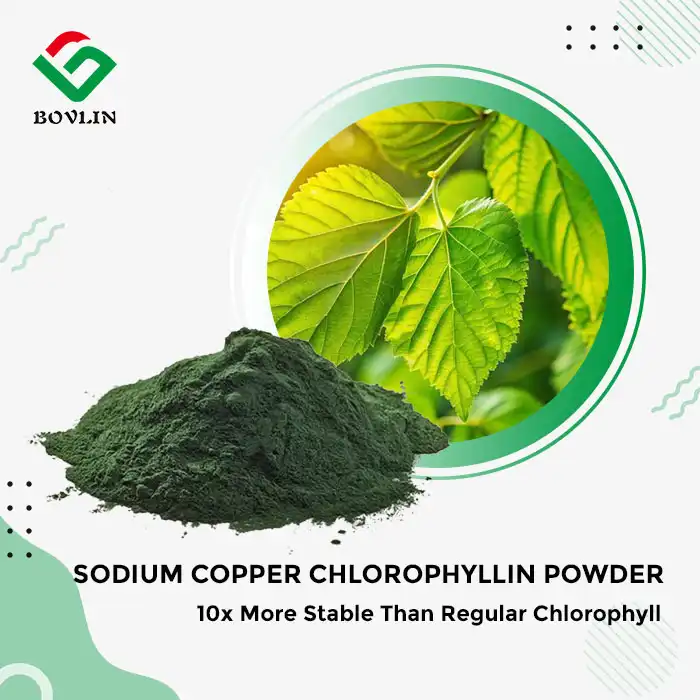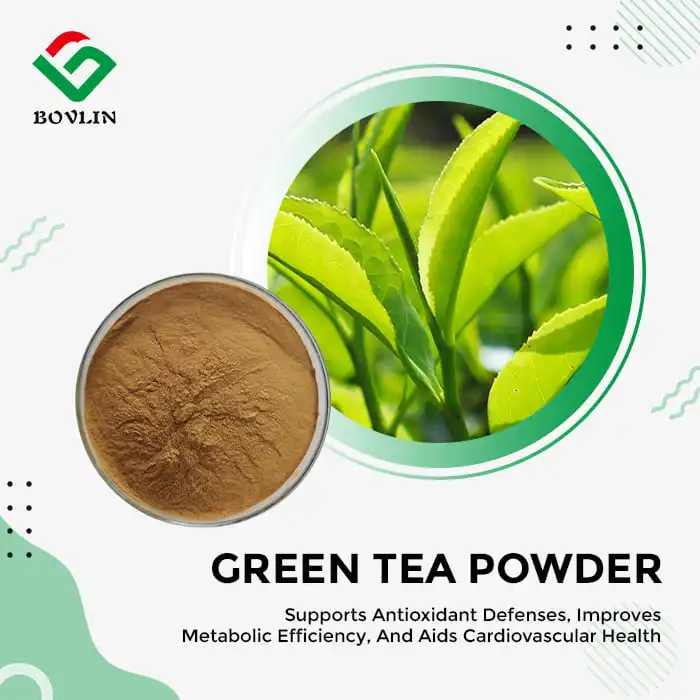What Certifications and Ingredient Labels Should Be Verified?
Organic and Non-GMO Certifications
When selecting instant matcha powder for your products, prioritize those with organic certifications. These ensure the tea leaves are grown without synthetic pesticides or fertilizers, resulting in a purer end product. Look for USDA Organic, EU Organic, or JAS (Japanese Agricultural Standard) labels. Additionally, Non-GMO Project Verified certifications guarantee the absence of genetically modified organisms in the matcha powder.
Quality Assurance Standards
Look for instant matcha powders that meet rigorous quality assurance standards. ISO (International Organization for Standardization) certifications, such as ISO 22000 for food safety management, indicate a commitment to maintaining high-quality production processes. HACCP (Hazard Analysis Critical Control Point) certification is another valuable indicator of a manufacturer's dedication to food safety and quality control.
Ingredient Transparency
Scrutinize the ingredient label. High-quality instant matcha powder should contain 100% pure matcha green tea powder, free from additives, fillers, and artificial ingredients. Be wary of products that list additional components, as these may compromise the authenticity and potency of the matcha. Transparency in sourcing, such as specifying the region of origin (e.g., Uji, Kyoto), can also be a positive indicator of quality.
Color, Solubility, and Particle Size as Quality Indicators
Vibrant Green Hue
The color of instant matcha powder is a crucial quality indicator. Premium matcha should exhibit a vibrant, rich green hue. This vivid color signifies high chlorophyll content, indicating that the tea leaves were properly shade-grown. Avoid powders with dull, yellowish, or brownish tints, as these may suggest lower quality or improper processing methods. The intensity of the green color often correlates with the powder's freshness and overall quality.
Optimal Solubility
High-quality instant best matcha powder should dissolve quickly and completely in water, leaving no clumps or sediment. Test the powder's solubility by mixing a small amount with room-temperature water. Superior matcha will disperse evenly, creating a smooth, lump-free mixture. This characteristic is particularly important for manufacturers incorporating matcha into beverages, baked goods, or other food products, as it ensures consistency and uniform flavor distribution.
Fine Particle Size
The texture of instant matcha powder plays a significant role in its quality and usability. Premium matcha should have an ultra-fine, talc-like consistency. When rubbed between your fingers, it should feel smooth and silky, without any grittiness. Finer particle sizes contribute to better dissolution and a smoother mouthfeel in the final product. Advanced grinding techniques, such as those employing granite stone mills, often yield the finest textures and are indicative of high-quality matcha production.

Comparing Grades: Culinary vs. Ceremonial Instant Matcha
Culinary Grade Characteristics
Culinary-grade instant matcha powder is specifically designed for use in food and beverage manufacturing. It typically has a stronger, more robust flavor profile that can withstand mixing with other ingredients. This grade often has a slightly darker green color compared to ceremonial grade and may have a somewhat coarser texture. Culinary-grade matcha is ideal for incorporating into recipes, as it maintains its flavor even when combined with dairy, sweeteners, or other additives. It's the preferred choice for large-scale production of matcha-flavored products like baked goods, ice cream, or ready-to-drink beverages.
Ceremonial Grade Features
Ceremonial-grade instant matcha green tea powder represents the highest quality available. It's characterized by its vibrant green color, exceptionally fine texture, and delicate, nuanced flavor profile. This grade is traditionally used in Japanese tea ceremonies and is prized for its smooth, umami-rich taste with minimal bitterness. While primarily intended for drinking as tea, ceremonial-grade matcha can be used in premium food products where its subtle flavors and vibrant color can be showcased. However, its higher cost and delicate nature make it less common in large-scale manufacturing.
Choosing the Right Grade for Your Application
When selecting between culinary and ceremonial grade instant matcha powder, consider your specific manufacturing needs. For most food and beverage applications, culinary-grade offers the best balance of quality and cost-effectiveness. It provides a strong matcha flavor and color that can withstand processing and mixing with other ingredients. Reserve ceremonial grade for premium products where the matcha's pure, delicate flavor is the star. Factor in your target market, price point, and the desired flavor intensity when making your decision. Some manufacturers may opt to use a blend of both grades to achieve an optimal balance of flavor, color, and cost.
Conclusion
Choosing a high-quality instant matcha powder is crucial for manufacturers aiming to create superior matcha-infused products. By carefully evaluating certifications, ingredient transparency, color, solubility, and particle size, you can ensure the selection of a premium powder that meets your specific needs. Understanding the distinctions between culinary and ceremonial grades allows for informed decision-making based on your application requirements. Prioritizing quality in your matcha sourcing will ultimately lead to better-tasting, more marketable products that stand out in the competitive food and beverage industry.
Contact Us
For more information about our premium instant matcha powder offerings and how they can enhance your products, please contact us at sales1@bovlin.com. Our team of experts is ready to assist you in finding the perfect matcha solution for your manufacturing needs.












